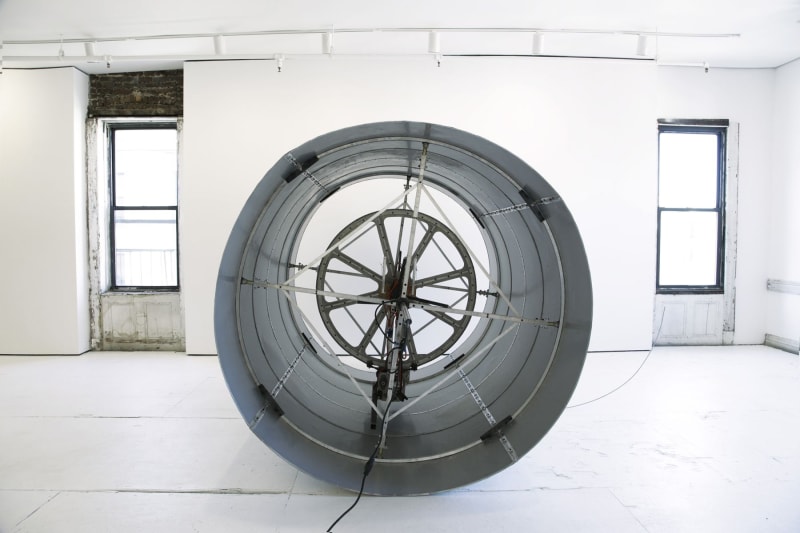As a general rule, machines are built to work, and not to stop working. The implications of this seemingly self-evident statement become clearer in the example of an airplane engine: the same mechanisms and protections that enable an engine to withstand minor disturbances inflight also assure that, in the event of a plane crash, an undamaged reactor can continue to operate until its energy sources have been exhausted, even if its actions no longer yield the intended effect of propelling an aircraft. In other words, at the most basic level, the equipment is designed tofunction regardless of whether or not the impact of its efforts registers within a larger process.
This image of the orphaned airplane reactor – a machine toiling in search of its purpose – provides the inspiration for “Jettison Parkway,” Dorian Gaudin’s first solo exhibition in New York, presented at Nathalie Karg. Part sculptor, part amateur engineer, Gaudin handcrafts machines as studies of resistance and release, aesthetic solutions to mechanical problems set by the artist. As with the airplane engine, Gaudin’s contraptions are designed to operate even if the logic of their greater function remains obscured. For this exhibition, the artist transforms the gallery space into a veritable obstacle course, where a self-propelled steamroller works in reverse, taking on the imprints of its environment as it careens through the room. The design of the machine is simple, with an emphasis on aesthetics that calls to mind the early experiments of kinetic artists like Naum Gabo. The elegance and economy of the engineering – stripped of superfluous parts or Tinguely-esque flourishes – contrasts with the crude maneuverings of the machine at work, as it negotiates its terrain, clattering against walls, navigating over the various objects strewn across the floor or confronting the viewers who enter the space.
Completing the exhibition is Gaudin’s new series of wall pieces that sidle constrained sheets of anodized aluminum against simple concrete shapes. The resulting compositions tap the evocative potential of their materials, so that the metal and mortar are made to suggest natural landscapes or sunset scenes. While these pieces testify more to Gaudin’s talent as an artist than as an engineer, they subscribe to the same spareness of gesture as the larger machine, parlaying minimal intervention to maximum effect. Visual machines, these works are confident in their purpose, leaving the viewer to divine their logic.

